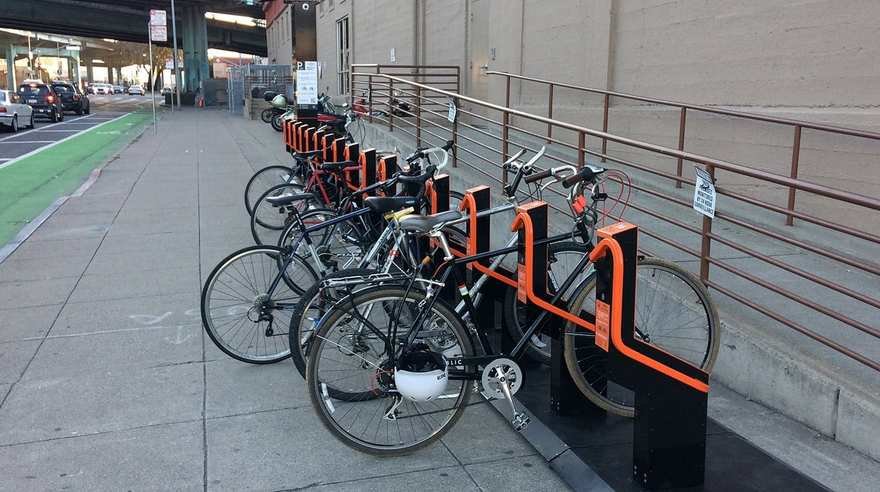A Solar-Powered Parking Spot Holder, and Other "Smart" Swiss Street Furniture
Velopa goes after the "low-hanging fruit" of the smart city
Swiss street furniture manufacturer Velopa is interested in the "smart" city. "We have given concrete thought to what intelligent solutions for 'smart' urban or mobility development could look like," they write. "For us as a manufacturer, it is important to convert these impulses into concrete product developments and thus make 'smart' tangible for the user. For example, smart bike racks, smartroofs or smart benches support it contributes to an increased quality of life and the optimization of processes."
"Bike sharing, smart benches or charging stations are among the so-called 'low-hanging fruit' measures in the smart city, which make public space more attractive with manageable effort."
To fulfill this vision, here's what the company offers:
Block Solar is a bench whose seating surface is safety glass, beneath which are photovoltaic panels charging an internal battery. USB ports on the side allow passersby to charge their devices.





The Woody Solar provides the same service, though here the solar panels are on a roof that provides some protection from the elements. The company calls it a "fully functioning solar island system" that can transmit Wi-Fi.





The Park Bench E-block is meant to be attached to mains power and offers 230-volt sockets for charging e-bikes, in addition to USB ports. It also features storage lockers with keypads or keys, though the key or keycode dispensing system is apparently up to the venue to provide.







The Velock is a keyless locking system for bike cages. The contactless reader can be activated by smartphone, keycard or key fob (though one still needs to physically touch the knob to open it).




The Bikeep is a bike rack with an integrated lock that's digitally activated. The locking bar passes through both the frame and the front wheel.






Enter a caption (optional)
The Parklio is perhaps the most interesting object of the bunch. It's a solar-powered parking spot holder, meant to be permanently installed by whomever owns the space. It locks in an upright position, preventing a car from driving onto the space. The owner can unlock it with their smartphone, then physically swing the barrier down to park. They can also share the unlocking ability with others via an app.






That last one seems, for a Swiss-designed object, rather ungainly and inelegant, no? At the very least it looks like a trip hazard.
In any case, you can see more of the company's offerings here.
-
o1Favorite This
-
QComment
K
{Welcome
Create a Core77 Account
Already have an account? Sign In
By creating a Core77 account you confirm that you accept the Terms of Use
K
Reset Password
Please enter your email and we will send an email to reset your password.

